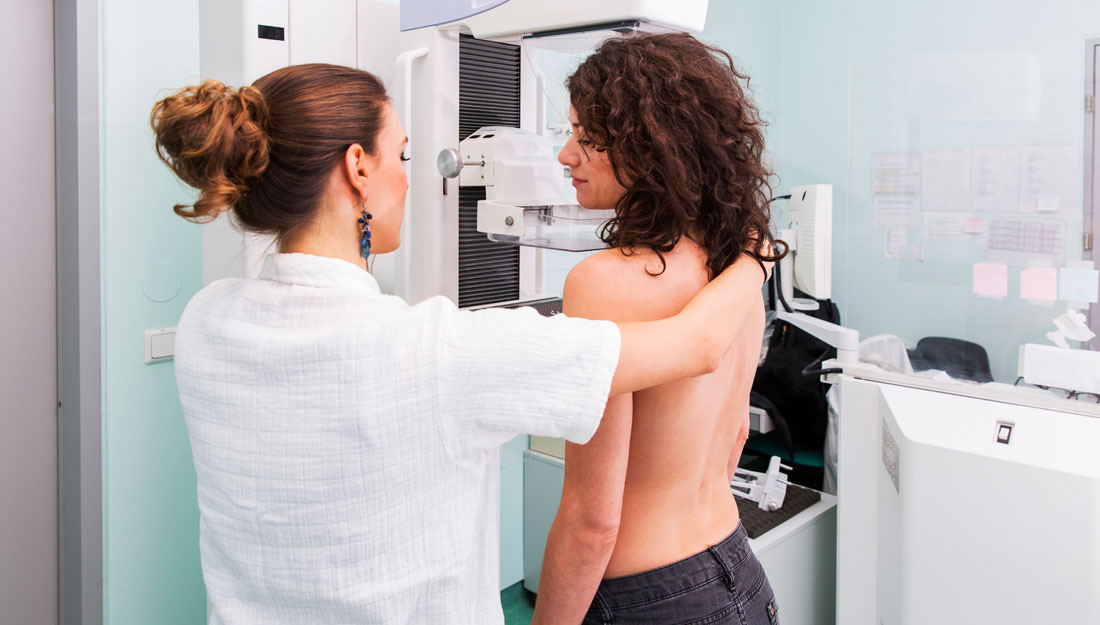An abnormality was found on my mammogram, now what?

You recently had your annual mammogram and, soon after, you receive a call (or letter) from your physician’s office that an abnormality was found. While a request for you to come in for further testing after a routine mammogram can cause concern for women who receive it, experts say you shouldn’t panic. Out of 1,000 screening mammograms, some 100 are called back in for follow-up, and only four of those patients called back will be diagnosed with cancer.
“Mammograms are an important part in the fight against breast cancer. Early detection of breast cancer saves lives and is critical for increasing survival. For most women, screening is uncomplicated but a small number of women will need to return for additional images or ultrasound to evaluate something found on the initial screening mammogram,” said Debra Monticciolo, M.D., chair of the American College of Radiology’s Commission on Breast Imaging and professor of radiology at the Texas A&M College of Medicine. “The letter doesn’t necessarily mean that you have cancer but it does mean that we will need to take an additional look.”
Types of abnormalities
The finding of an abnormality is not uncommon when going in for a routine mammogram. The word “abnormality” sounds scary, but it’s actually just a broad term that means something on your mammogram is suspicious and worth checking out. According to the American Cancer Society, less than 10 percent of women called back for more tests are actually found to have breast cancer. So what could be the cause of your abnormal reading?
A suspicious finding may just be dense breast tissue, a cyst or even a tumor that isn’t cancer. Other times, the image is unclear and needs to be retaken. “Sometimes, abnormalities are early lesions that can progress to cancer, but the problem is that there is no way to be sure which early lesions will progress and which ones will resolve on their own, there simply isn’t enough research on it yet,” said Robin Fuchs-Young, Ph.D., professor at the Texas A&M College of Medicine and Texas A&M Institute for Biosciences and Technology.
Other abnormalities may be the result of a false positive reading, meaning there was nothing abnormal on the mammogram to begin with. Some studies indicate that in the United States, as many as 50 percent of all women will experience a false positive at some point in their lifetime. “ False positive readings present a variety of issues, including over diagnosis and over treatment. They can also cause unnecessary anxiety for the patient,” said Fuchs-Young.
That being said, early detection is very important, because the best outcomes are achieved when treatment is started while the cancer is still in an early stage. Screening is especially important for women at increased risk due to family or medical history.
“Current research is focused on improving our understanding of which women are at increased risk and on developing better tests for identifying and treating the most aggressive tumors,” said Fuchs-Young.
Next steps
“Regardless of the nature of the abnormality, suspicious results will need to be further examined,” said Monticiollo. “If a woman if found to have an abnormality, she will be sent a letter asking her to return. At our facility, nurses make a personal phone call to alert the woman and discuss what that means, and next steps, well before the letter arrives. We don’t want them to be surprised by the letter.”
A follow-up mammogram is called a diagnostic mammogram (the first one is called the screening mammogram). This type of mammogram is still an x-ray of your breasts, but more pictures are taken so that areas of concern can be studied more carefully.
Another option is an ultrasound test, which uses sound waves to create a computer image of the tissues inside your breasts. The test is painless and does not expose you to radiation. Again, the goal of the test is to examine areas of concern more carefully.
Some women may be asked to come in for an MRI where you will be asked to lie face down inside a narrow tube for up to an hour while sensors capture information used to create a more detailed image of the tissues inside your breasts. The test is painless, but may cause some anxiety for those that don’t like small, enclosed spaces.
Biopsies are another option, which collect tissue to help determine whether the lesion is benign or malignant. “Biopsies can be minimally invasive these days using only a needle and ultrasound or x-ray guidance,” Monticciolo said. Others may use an incision, but it all depends on where it is located in the breast, as well as the patient’s medical background and personal preference.
Tissue collected from the biopsy will be sent to a pathologist. Results may take a few days and can even take as long as a week to come in. Many health care facilities will try to get results back to their patients as quickly as possible to lessen anxiety.
If results from your biopsy are negative or benign it means that no cancer was found. Ask your doctor if any follow-up is necessary and when to schedule your next mammogram. If results show that you do have cancer, your doctor may refer you to a breast surgeon or other breast specialist.
The main takeaway, Monticciolo said, is that mammograms save lives. “Studies show that if mammography is used in a population, then the mortality rate for breast cancer drops significantly.” In other words, don’t let the anxiety of what results may say prevent you from going. Mammograms are all about finding cancer as early as possible to give you the best chance at beating it.
Media contact: media@tamu.edu


